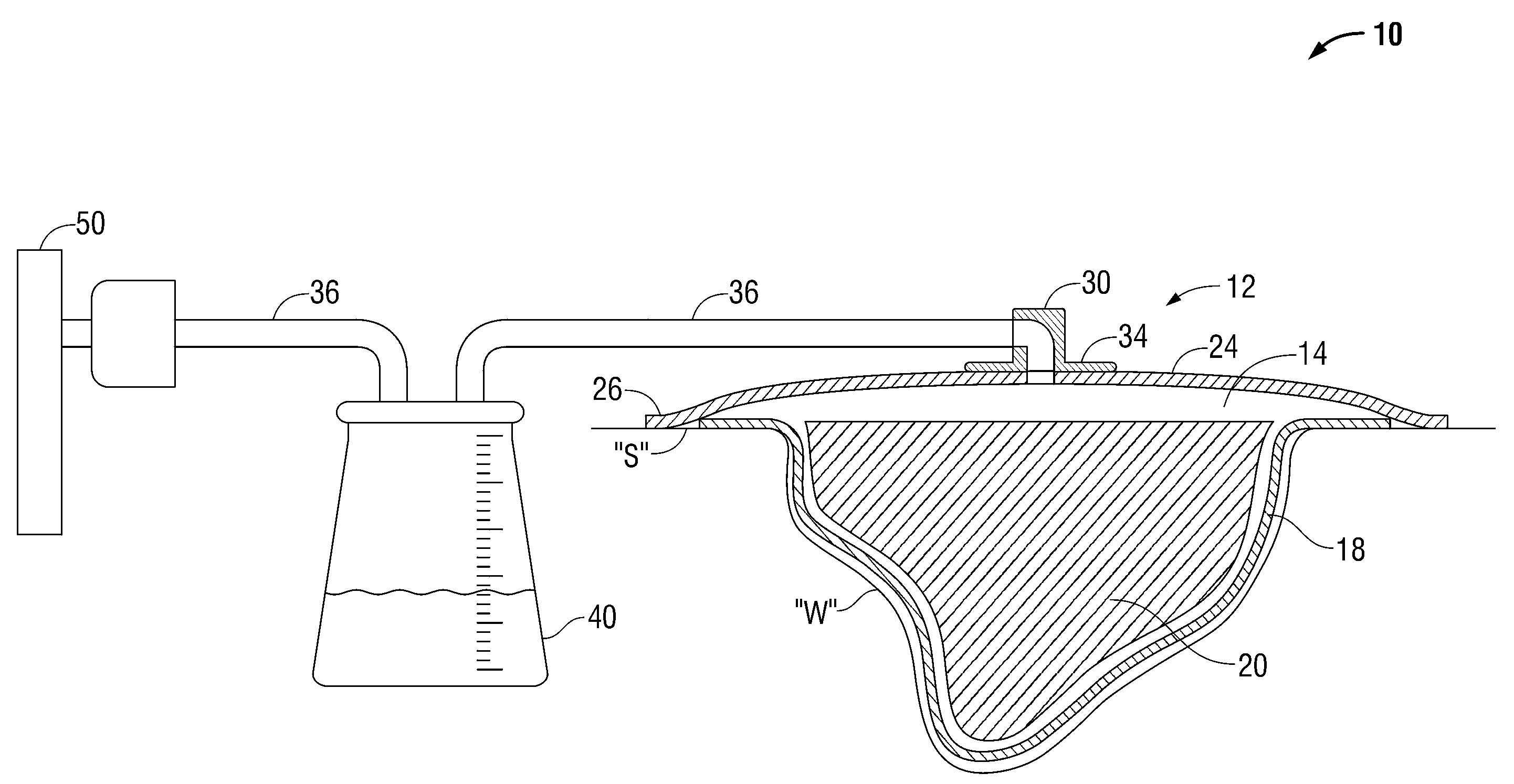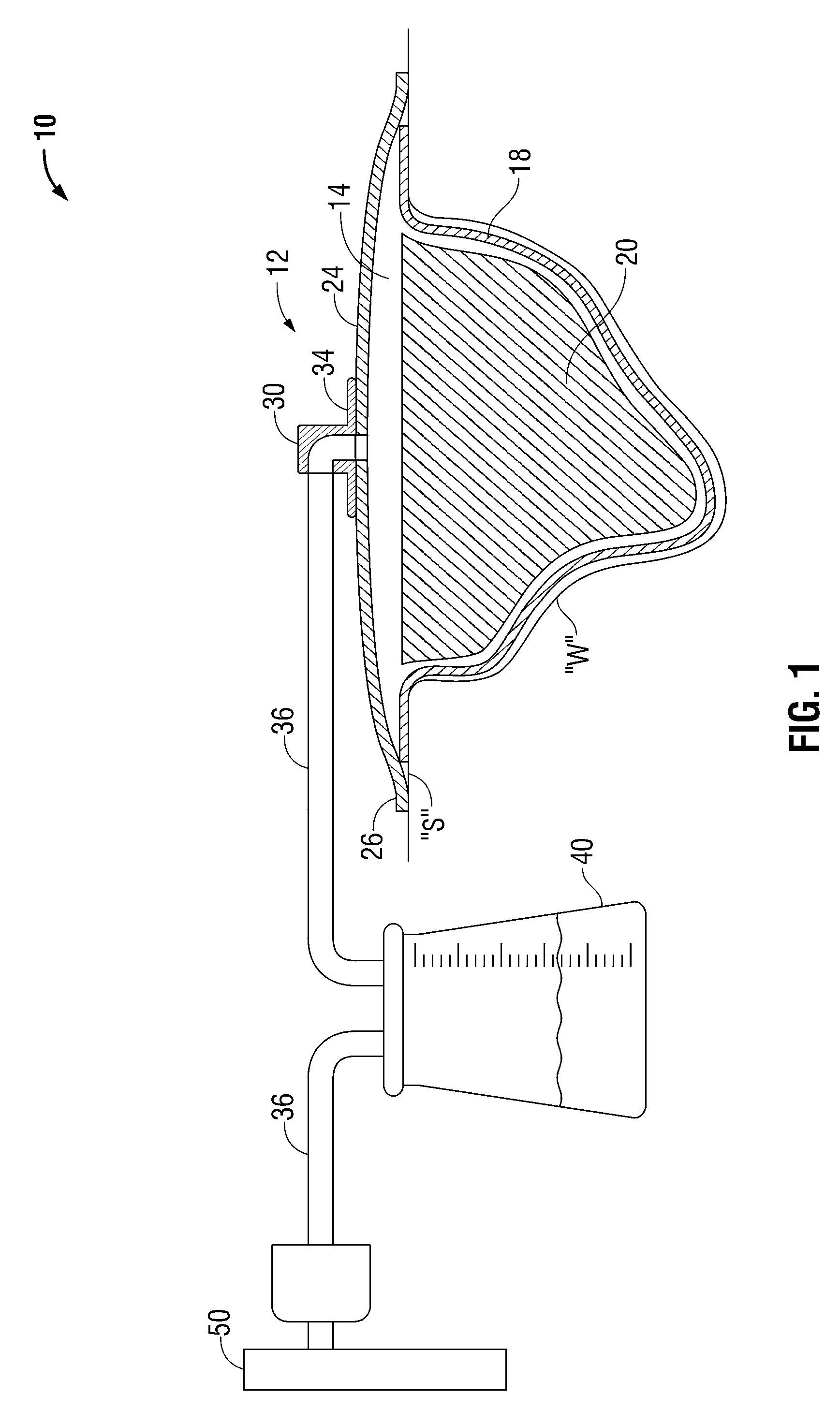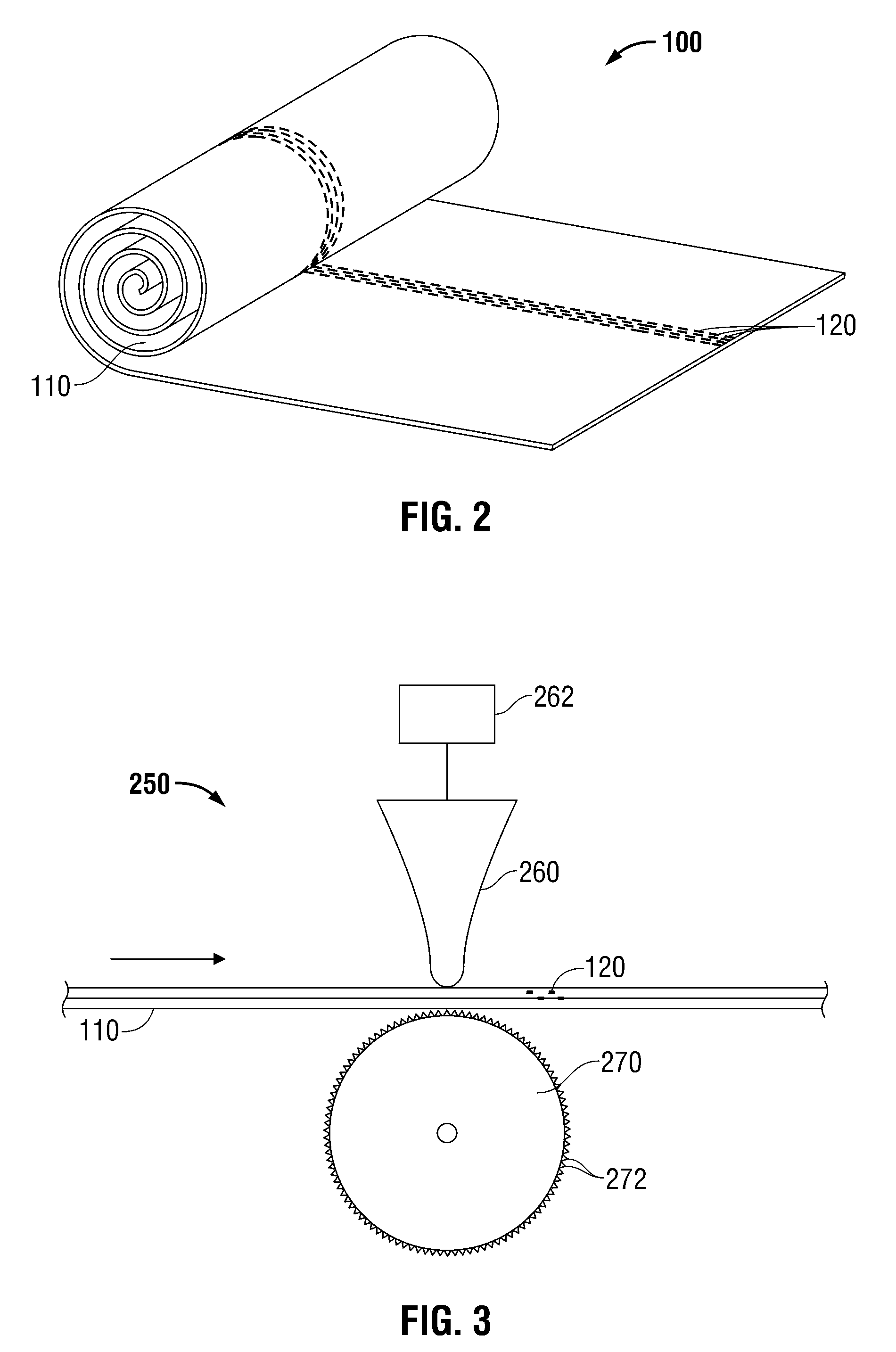Fibrous Wound Filler Material for Negative Pressure Wound Therapy
a filler material and wound technology, applied in the field of wound dressings, can solve the problems of increasing the risk of infection, removing stray fibers, and trauma to the wound,
- Summary
- Abstract
- Description
- Claims
- Application Information
AI Technical Summary
Problems solved by technology
Method used
Image
Examples
Embodiment Construction
[0013]The wound dressing of the present disclosure incorporates a perforated nonwoven wound filler suitable for improving exudates flow therethrough, while minimizing loose fiber formation. The nonwoven wound filler is sonically welded to bond and perforate the fibers of the nonwoven material to form apertures, free of protruding or loose fibers, through which exudates may flow. Because of the relatively fiber free surface provided by the sonic welding process, the nonwoven material will exhibit a substantially lower tendency to become attached to a healing wound bed. Further, the nonwoven fibers will have a substantially lower tendency to become separated from the wound filler and be inadvertently left in a wound when the wound dressing is changed.
[0014]While the specification refers to the use of a perforated nonwoven material as a wound filler for NPWT, the perforated nonwoven material may be used in a variety of wound care applications, such as a packing material for low exuding...
PUM
| Property | Measurement | Unit |
|---|---|---|
| length | aaaaa | aaaaa |
| length | aaaaa | aaaaa |
| width | aaaaa | aaaaa |
Abstract
Description
Claims
Application Information
 Login to View More
Login to View More - R&D
- Intellectual Property
- Life Sciences
- Materials
- Tech Scout
- Unparalleled Data Quality
- Higher Quality Content
- 60% Fewer Hallucinations
Browse by: Latest US Patents, China's latest patents, Technical Efficacy Thesaurus, Application Domain, Technology Topic, Popular Technical Reports.
© 2025 PatSnap. All rights reserved.Legal|Privacy policy|Modern Slavery Act Transparency Statement|Sitemap|About US| Contact US: help@patsnap.com



